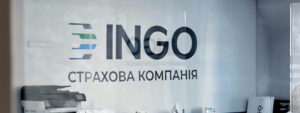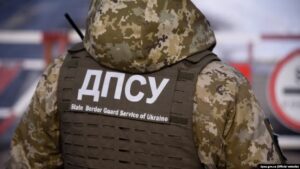
The insurance company INGO paid UAH 10 million to the foreign-invested company Vortex LLC (Biosphere Group) for damage to a production and storage complex in Dnipro as a result of a rocket attack in April this year.
According to the company’s statement, the payment was made in the maximum amount of insurance coverage provided for in the contract, as the actual amount of damage significantly exceeded the liability limit.
It is specified that the Russian missile strike on the city’s civilian infrastructure caused a large-scale fire on the territory of the complex: the fire covered about 6,000 square meters. The company’s buildings and structures were significantly damaged. A technical survey found that structures were destroyed, floors and ceilings were damaged in a number of rooms, walls and partitions, internal and external facade cladding, and window and door frames were deformed. The condition of some of the premises makes further operation impossible due to the risk of emergency collapse. In addition, property inside the buildings, including production equipment, inventory, and furniture, was significantly damaged. According to official data, one employee was killed in the attack and 17 others were injured to varying degrees.
The company reports that this is the second insurance claim at this facility related to military risks. At the beginning of the year, the complex was also affected by a blast wave. At that time, the damage was less extensive and mainly affected window structures.
The Biosphere Group, which includes Vortex, is one of Ukraine’s largest manufacturers and distributors of household, personal hygiene, and professional products. The group’s enterprises are located in various regions of Ukraine and provide jobs for thousands of employees.
INGO Insurance Company has been operating in the Ukrainian market for over 30 years and provides insurance solutions for businesses and individuals. It is licensed for 18 classes of insurance, is one of the market leaders in terms of premiums, assets, and insurance payments, and has an extensive service network throughout the country.

August 29–31, 2025 — Lviv will host Lviv Invest Forum 2025, one of the key investment events of the year.
The forum will bring together over 1,000 participants, investors, entrepreneurs, government officials, and international partners to discuss the most pressing challenges and opportunities for investing in Ukraine.
Focus 2025: “Invest wisely. Grow with the community.”
This year’s theme is conscious investment and sustainable private capital development.
This is not just an event, but a living platform for networking, launching joint projects, and strategic dialogue between business, government, and investors.
What can you expect?
Speakers include:
Organizers and partners
The forum is organized by the Lviv Invest Forum team in partnership with leading Ukrainian businesses.
General partner:
Resident Development — a development company that has been transforming the urban environment of Lviv for nine years, combining comfort, quality, and investment attractiveness.
Partners include: Bentley, MHP, Photomate, Spatium, Arha Group, and dozens of other companies.
Partner hotels:
Emily Resort, Grand Hotel Lviv, City Inn Lviv, and Citadel Gastro Boutique Hotel — special accommodation conditions for participants (discounts up to 15% with the promo code LIF2025).
Who is this forum for:
Details and participation
Official registration: https://lviv-invest.com
Dates: August 29–31, 2025
Locations: Emily Resort, Lviv. (Day 3 – Derevach village)
Contact for media and partnerships: lviv.invest.forum@gmail.com
Lviv Invest Forum 2025 is a place where business finds partners and investments find meaning. Join us to be at the center of the new economy.

Demand for primary housing in Ukraine in the first half of 2025 was 50-60% lower than supply, according to the press service of Kovcheg Developer.
“The average volume of construction in Ukraine in the first half of the year increased by 30% compared to the same period in 2024. However, despite the activity of developers, the actual number of deals in the primary housing market is significantly, by 50-60%, lower than supply,” Viktor Kozachok, co-founder of Kovcheg Developer, told Interfax-Ukraine.
According to the expert, the main thing holding things back is still the uncertainty caused by the war. On top of that, there’s inflation, currency fluctuations, and low incomes, which all make it harder to decide to buy a home.
At the same time, demand for new homes isn’t spread out evenly.
According to Kovcheg Developer’s estimates, the largest share — about 40% — falls on the western regions: Lviv, Ivano-Frankivsk, Chernivtsi, and Zakarpattia. More than 25% of requests for primary housing are concentrated in Kyiv and its suburbs.
Approximately 15% of buyers choose Odesa and its surroundings. Other regions account for only about 20% of demand. An expert named the main factors influencing buyers’ decisions to purchase housing in new buildings. In first place is the safety of the region and the residential complex.
People are actively interested in the level of protection against rocket attacks, the availability of bomb shelters or individual security rooms in residential complexes. Other criteria are the same as before 2022: the pace and quality of construction, technical characteristics and infrastructure of the residential complex, prices and purchase mechanisms.
“Buyers are interested in recreational infrastructure, summer and winter leisure opportunities, service packages, etc. In addition, the desire to live in conditions of ”social comfort“ is important — we call this ”escaping from megacities.” Therefore, conceptual projects with unique infrastructure facilities and scenic features, as well as a flexible service model, are more attractive. For many, future real estate is a “spare airport,” a private resort, and a source of income all at once,” Kozachok emphasized.
As for developers’ pricing policy, it is influenced by rising prices for construction materials and services (by an average of 10-12% since the beginning of the year) and fluctuations in the currency market. According to the company’s research, prices for high-quality comfort and business-class properties under construction in Ukraine currently range from $1,200 to $2,500 per square meter.
At the same time, citizens are increasingly interested in the possibility of receiving passive income from income-generating properties and “resort” apartment hotels, with investments in such projects potentially yielding 7-11% annual returns in dollar terms.
The expert drew attention to the regional features of the primary market. In particular, the western regions are characterized by the construction of individual, conceptual projects with unique architecture and services.
“The west of Ukraine is characterized by the development of new innovative formats that are on the borderline between ‘resort real estate’ and housing. These are multifunctional residential complexes with self-sufficient infrastructure for recreation at the level of the best hotels,” he said.
Among the examples, he cited so-called “vertical” resorts with multifunctional roofs and unique infrastructure facilities, as well as income-generating buildings with flexible use options (in the “live-rent” format).
In his opinion, traditional multi-apartment construction remains relevant for the capital and other large cities with a concentration of industrial facilities, but taking into account modern requirements for living safety, energy efficiency, and construction quality.
“The main things that can unite modern housing are concept, safety, comfort, quality, and infrastructure,” Kozachok summed up.
Kovcheg Developer is a construction company founded in 2018. The company specializes in the construction of modern business-class residential and apartment complexes. The company’s portfolio includes eight completed projects with a total area of 17,000 square meters of residential and commercial construction in the Ivano-Frankivsk region. Several projects of various formats are currently under active construction: Logos Home Apartment residential complex (Yaremche), Kardamon Resort & SPA investment project (Bukovel), Grono Family Resedence residential complex (Polianytsia), Parkova Dolyna residential complex (Dolyna), Kovheg Residence cottage town (Polianytsia), and others.
In 2024, Kovcheg Developer began construction of Bright House duplexes in the village of Żabia Wola (Grodzisk County, Mazovia Province, Poland).
By 2028, the company plans to start construction of about 10 residential projects and commercial real estate properties with a total area of over 80,000 square meters.

The State Border Service of Ukraine reports a 40% increase in passenger traffic through checkpoints in the Lviv region on the border with Poland since the start of the summer season, and on weekends – by another 16% compared to weekdays.
“One of the busiest checkpoints remains Shehyni due to repair work on the Ukrainian side,” the agency said in a Telegram channel on Thursday.
In particular, 150 cars have gathered at this checkpoint, 100 at the Krakivets checkpoint, 30 at the Hrushev checkpoint, 25 at the Uhryniv checkpoint, and 10 at the Nyzhankovychi checkpoint. Only the Smilnytsia and Rava-Ruska checkpoints are operating without delays.
“To speed up the processing of citizens, border guards have stepped up their work: during peak hours, the number of patrols has been increased and additional automated workstations have been deployed. Regular meetings are also held with Polish colleagues to jointly seek solutions that will help speed up border crossings,” the State Border Service said.
As reported, passenger traffic across the Ukrainian border during the week of July 26 to August 1 increased by 1.7% to 766,000, setting a new record for wartime: last year, record figures were recorded in August and amounted to 737,000. The outbound flow in the ninth week of summer remained almost unchanged at 367,000 compared to 369,000 a week ago, while the inbound flow increased from 384,000 to 399,000.

Distribution system operators (DSOs) DTEK Networks continued to repair energy infrastructure in the first half of 2025, investing almost UAH 2.3 billion in its restoration and construction, according to the company’s press service.
“In the first half of the year, we invested almost UAH 2.3 billion in new construction, technical re-equipment, and reconstruction of electrical networks and power equipment, including UAH 686 million for the introduction and development of commercial electricity metering and other areas, and about UAH 930 million. We also invested almost UAH 352 million in repairs in four regions of Ukraine over the six months,” said Alina Bondarenko, CEO of DTEK Networks, as quoted in the press release.
According to the DTEK Networks press release, 4,370 km of overhead power lines, 2,870 cable lines, and more than 3,600 energy facilities in Kyiv, Kyiv, Dnipropetrovsk, and Odesa regions were upgraded.
As part of the investment program in the first half of the year, three transformer and four distribution substations were reconstructed, seven new transformer stations were built, and over 101,000 smart meters were installed.
“DTEK Networks is actively implementing its 2025 repair program, preparing the energy infrastructure of four regions—Kyiv, Kyiv, Dnipropetrovsk, and Odesa—for the upcoming heating season,” the operating holding company said.
In particular, in the first half of the year, energy companies have already completed over 60% of the planned repairs to power lines.
According to her, in the first six months, DTEK energy companies also repaired 634 transformer substations and distribution points and almost 3,000 other energy facilities.
DTEK Networks develops its business in electricity distribution and power grid operation in Kyiv, Kyiv, Dnipropetrovsk, Donetsk, and Odesa regions. The company’s power grids serve 5.1 million households and 150,000 businesses.

The Department of Health of the Kyiv City State Administration reports a multiple increase in the number of hospitalizations due to COVID-19 in the Ukrainian capital since the beginning of July.
“If as of July 1, 15 people were in the infectious disease departments of inpatient communal medical institutions, at the moment – 68, 24 of them – children. It is clear that in hospitals get those whose course of illness can not be called mild and who need constant monitoring of medics, serious treatment, oxygen support, etc.,” – reported on the page of the Department in Facebook on Thursday evening.
The post notes that staying in shelters – enclosed spaces with limited ventilation – increases the risk of infection, including COVID-19. “Don’t forget your mask in closed confined spaces…. Wash your hands regularly or use antiseptic. Stay at home and seek medical attention at the first symptoms,” the department advised.